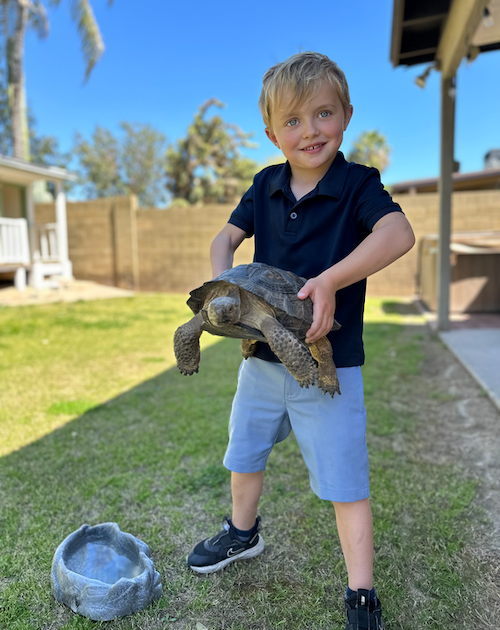
|
AZGFD has over 100 desert tortoises that need forever homes
When we asked the Easter Bunny to include some desert tortoises in his Easter basket deliveries, he said the only shells he deals with are on the eggs! So now, we’re asking you directly. The Desert Tortoise Adoption Program at the Arizona Game and Fish Department (AZGFD) currently has over 100 non-releasable desert tortoises that need forever homes. The tortoises will soon wake up from brumation, so it’s the perfect time to get your burrow built and your adoption application submitted. Everything you need to know about the adoption process, burrow-building and tortoise care can be found at azgfd.gov/tortoise.
Wildlife biologists at AZGFD are currently caring for over 100 surrendered desert tortoises that would jump (or at least crawl enthusiastically) at the chance to join your family this spring. Each year, AZGFD cares for hundreds of captive desert tortoises that have been turned into the state or abandoned as a result of illegal breeding. It's not safe for these tortoises to be released back into the wild—captive tortoises can harbor respiratory infections that could be devastating to the wild population—so the AZGFD Desert Tortoise Adoption Program looks after them, but space and resources are limited. That’s where you come in: In addition to getting a great pet, Arizona residents have a unique opportunity to help protect our state’s desert wildlife by welcoming a desert tortoise to their home.
“Desert tortoises offer longtime companionship without the drama,” said Tegan Wolf, Desert Tortoise Adoption Program coordinator. “Tortoises are affectionate and low maintenance. They enjoy healthy greens, exploring the outdoors and visiting with their companions. With the right preparations, desert tortoises make a great addition to a family home. Our team of biologists will help you find your perfect match and prepare for their arrival.”
How to Care for Desert Tortoises
Next steps on helping care for a desert tortoise:
Check out AZGFD’s tortoise adoption guide. It has everything you need to know to get ready for your new torty BFF, as well as how to take care of it once you bring it home.
Can’t adopt? You can still help! Donate to the Tortoise Program to support their care until they find forever homes.